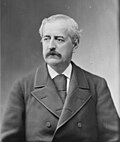| Governor of Arizona | |
|---|---|
 | |
 | |
| Government of Arizona | |
| Style | The Honorable |
| Status | |
| Residence | No official residence |
| Term length | Four years, renewable once consecutively [1] |
| Constituting instrument | Arizona Constitution, article V [2] |
| Inaugural holder | George W. P. Hunt |
| Formation | February 14, 1912 |
| Succession | Line of succession |
| Deputy | None (until 2027) Lieutenant Governor (expected from 2027) [3] |
| Salary | $95,000 (2022) [4] |
| Website | azgovernor |
The governor of Arizona is the head of government of the U.S. state of Arizona. [5] As the top elected official, the governor is the head of the executive branch of the Arizona state government and is charged with faithfully executing state laws. [5] The governor has the power to either approve or veto bills passed by the Arizona State Legislature; [6] to convene the legislature; [5] and to grant pardons, [7] with the exception of cases of impeachment. The governor is also the commander-in-chief of the state's military forces. [8] Arizona is one of the few states that currently does not have a governor's mansion or other official residence.
Contents
- List of governors
- Confederate Arizona
- Territory of Arizona
- State of Arizona
- Timeline
- See also
- Notes
- References
- External links
Twenty-four people have served as governor over 28 distinct terms. All of the repeat governors were in the state's earliest years, when George W. P. Hunt and Thomas Edward Campbell alternated as governor for 17 years and, after a two-year gap, Hunt served another term. One governor, Evan Mecham, was impeached by the Arizona House of Representatives and subsequently removed from office following his conviction in the Arizona Senate. Another, Fife Symington, resigned upon being convicted of a felony. The longest-serving governor was Hunt, who was elected seven times and served just under fourteen years. The longest single stint was that of Bruce Babbitt, who was elected to two four-year terms after succeeding to the office following the death of his predecessor, Wesley Bolin, serving nearly nine years total. Bolin had the shortest tenure, dying less than five months after succeeding as governor. Arizona has had five female governors, the most in the United States, and was the first—and until 2019 (when Michelle Lujan Grisham succeeded Susana Martinez in neighboring New Mexico) the only—state where female governors served consecutively.
The current governor as of January 2, 2023, is Democrat Katie Hobbs.










































